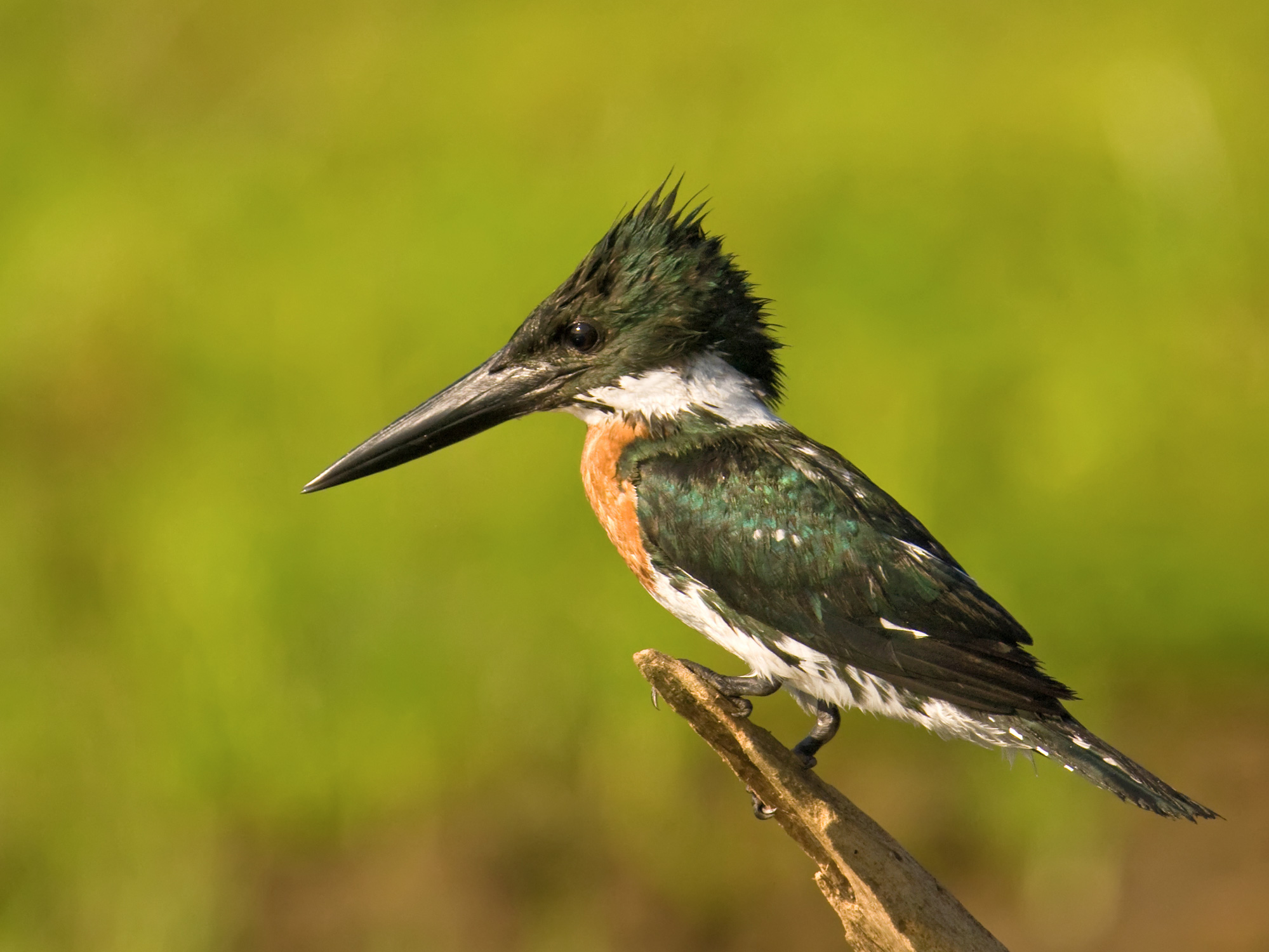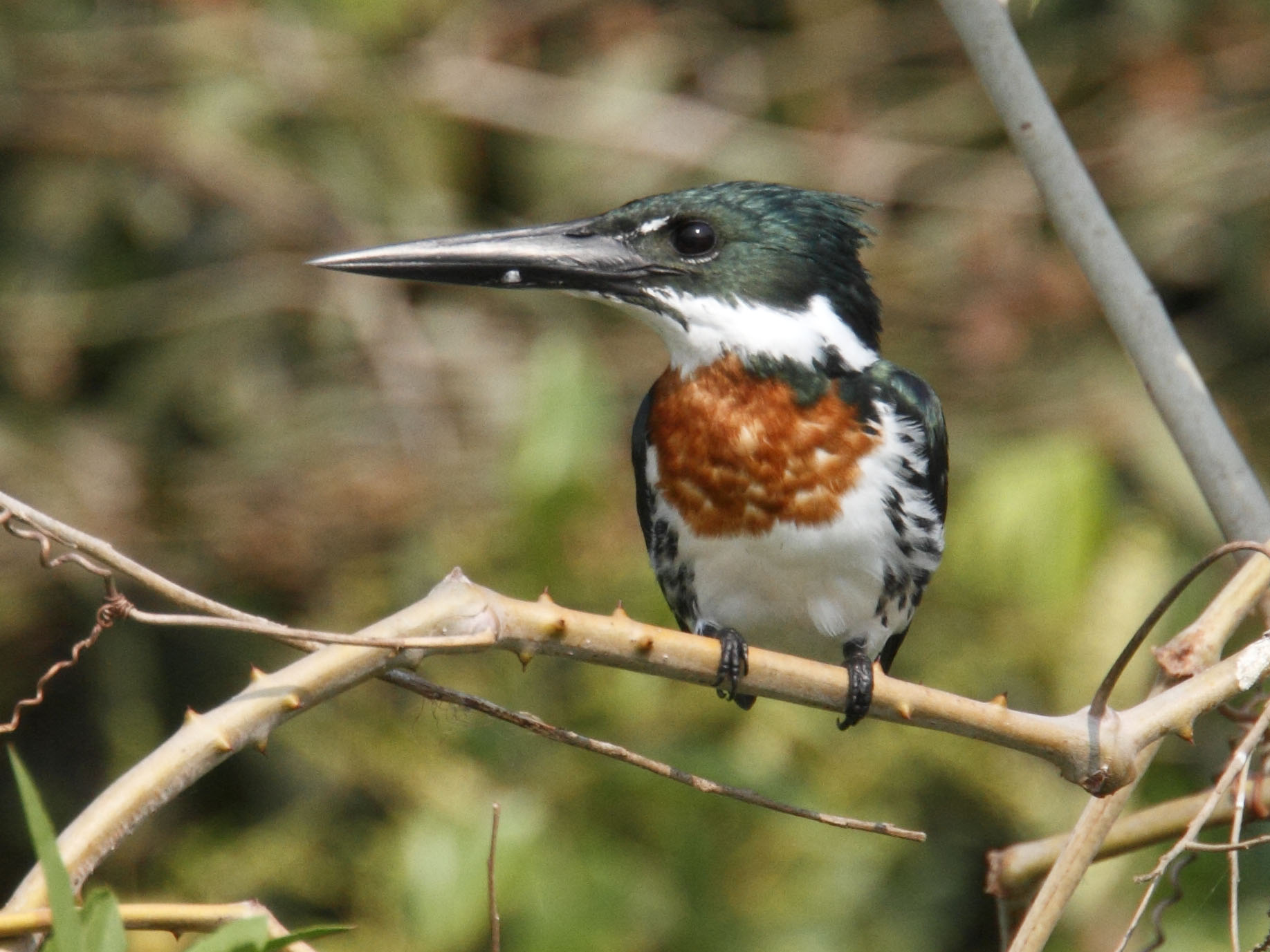
Chloroceyle amazona
SUBFAMILY
Cerylinae
TAXONOMY
Alcedo amazona Latham, 1790, Cayenne. Monotypic.
OTHER COMMON NAMES
French: Martin-pкcheur d’Amazonie; German: Amazonasfischer;
Spanish: Martin Pescador Amazуnico.
PHYSICAL CHARACTERISTICS
12 in (30 cm), 3.5–4.9 oz (98–140 g). Very large, metallicgreen
kingfisher, with white underparts and collar. Flanks
streaked with green, breast band rufous (male) or green (female).
Long heavy black bill.
DISTRIBUTION
Mexico, central and South America, east of Andes and south to
northern Argentina.
HABITAT
Large rivers, lakes and estuaries, especially along more open
shores, up to 8,202 ft (2,500 m) above sea level.
BEHAVIOR
Most often perched about 16 ft (5 m) up in large tree overlooking
water. Sometimes bobs head or pumps tail. Utters loud
harsh barks, singly or in rapid series.
FEEDING ECOLOGY AND DIET
Aquatic diet, mainly of 0.4–6.7 in (10–170 mm) long fish, especially
characid species, and some crustacea. Dives into water after
prey from perch, rarely after hovering briefly.
REPRODUCTIVE BIOLOGY
Both members of monogamous pair excavate nest tunnel in
earth back near water. Lays two to four eggs, incubated for 22
days by female at night and mainly by male by day. Nestling
period 29–30 days.
CONSERVATION STATUS
Not threatened. Widespread and common, at densities of up to
1/km (large rivers), 4/km (streams) and even 5–6/km (lakes) at
center of range. Occurs alongside four other species, two of
similar size, two smaller, that may affect abundance, ecology,
and success.
SIGNIFICANCE TO HUMANS
None known.
Other popular Animals
Photo Gallery of - Amazon kingfisher




 Animalia Life
Animalia Life